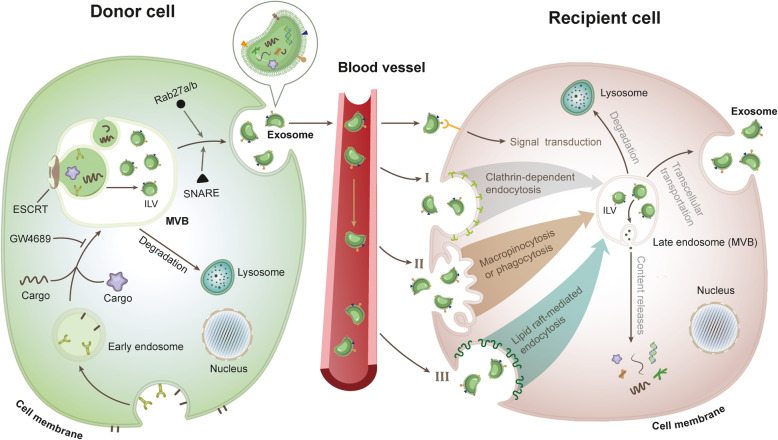Fig. 2.
Exosome secretion and uptake. (i) Specific areas of the plasma membrane can invaginate along with cargo (es) to form an early endosome structure. Early endosomes then further continue to collect various cargoes from the cytosol, during which with the assistance of ESCRTs and other related proteins, the endosomal lipid membrane can wrap a range of wanted cargoes to form a variety of independently closed ILVs inside the late endosomes (MVBs). MVBs can move to and combine with lysosomes to digest their content and recycle them or, alternatively, fuse with the plasma membrane to secrete ILVs out of cells, thus forming exosomes. (ii) Exosomes can be transported by the body fluids, including blood, to reach their target or recipient cells. Exosomes function by directly transmitting signals upon binding to surface receptors of recipient cells, or being absorbed into the recipient cells through different endocytosis mechanisms to form endosomes again. Inside the target cells, exosomes can release their content into cytosol to fulfill various signaling transduction, be merged with lysosomes digest and recycle content, or re-fuse with the plasma membrane to accomplish the transcellular transportation

